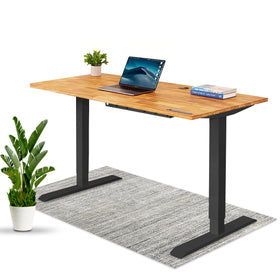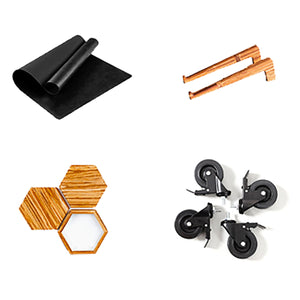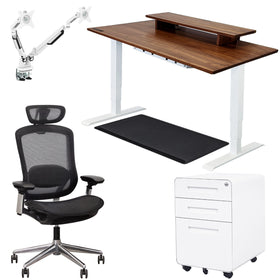
How to Polish Your Active Listening Skills from Home
Do you ever feel yourself “zoning out” in the middle of meetings? Do you find it hard to engage in certain conversations? Or do you find yourself hearing words but not understanding them?
If you relate to any of these scenarios, you’ll definitely benefit from a little bit of active listening practice!
What is Active Listening?

Active listening is an interpersonal skill that carries well into many situations, whether professional or social, online or in person. Active listening involves both verbal and nonverbal cues to the speaker that you are listening and hearing what they’re saying. People who have good active listening skills are able to hear, understand, and absorb what the speaker has said to them.
Why is Active Listening Important?
No matter who you’re talking to, active listening makes the speaker feel valued and heard. Think about it--you’d find it rather rude if your friend was constantly checking their phone during your conversation. You’d feel a bit awkward if your coworkers didn’t bother to offer a single comment or opinion after a meeting. You might wonder if they were even listening at all!
Engaging in active listening plays a few roles in social interactions:
- It builds trust between the two parties. Taking time to really listen shows the other person that they can trust you.
- It fosters productivity in a workplace. When everyone understands the first time around, you won’t have to repeat yourself or have the same conversations all over again.
- It helps resolve conflict. Active listening means both parties listen carefully to one another, which helps with problem solving and conflict resolution.
But with so many of us working from home, how can we brush up on our active listening? Well, the same techniques we use in person can be used over the phone, on video calls, and sometimes in emails! Without further ado, here are 5 simple active listening techniques to help you become an effective and attentive listener.
5 Tips to Help You Become An Effective Listener
1. Pay Attention

This might seem like a no-brainer, but it’s the most crucial part of active listening. Pay full attention--really listen to the speaker. Put aside visual distractions and focus on what the person is saying. Zipping your phone into your backpack and setting aside your current work can show them that you care about them.
When you listen, take time to understand the message. Don’t think of any responses right away! Listen to comprehend, instead of listening to come up with a response.
2. Indicate that you’re interested
Your body language tells people a lot about what you’re thinking! Eye contact tells the speaker that you’re engaged in the topic. Turning your body towards the speaker also shows them that you aren’t thinking of walking away any time soon. Simple nodding and other facial expressions encourage the speaker to keep talking, and shows you’re still listening.
These body signals also carry over video calls! Face the camera so the speaker knows you’re not doing something else at the same time. Leaning in also shows that you’re interested in the topic. Nodding can indicate to them that you’re still paying attention (and sometimes, it can help them discern whether or not their microphone is working!)
3. Provide Some Verbal Cues
As someone is talking, it’s great to show you’re listening by providing verbal cues. Phrases like “uh-huh,” or “okay” show that you’re engaged, and this is much better than letting the speaker go on in steely silence, wondering if you’re listening at all!
Verbal feedback like this is especially important over phone calls. If you can’t read someone’s body language, it’s hard to tell if they’re listening to you. It’s also very easy to get distracted, as a listener, when you’re on a phone call!
4. Summarize Key Points

Another way to stay engaged is to identify key points. This helps your brain to absorb information better, which is especially helpful for long meetings or phone calls where you aren’t always able to take notes.
You can either listen out for key points and make a note of them in your head, or you can clarify meaning with the other party (when you can) to be an effective listener. Use sentences like “You mean to say…” and “So that means…” to make sure you understand!
For example, on a phone call with your aunt, you might hear a 15-minute tale of how her day went, but summarize it back to her: “So you mean to say you went all the way to the bank, the grocery store, Anne’s house, and back home, only to find out you had been wearing your sweater inside-out?”
5. Engaging In The Topic
Asking questions is one of the best ways to show someone you were listening to what they said. Aside from clarifying meaning, good listeners ask for additional information on certain subjects. Was it a meeting about the new desks at the office? Maybe you could ask about the design: “Could you tell me a bit more about how this would fit in with our minimal office design?”
With online video calls now that everyone is working from home, it’s a little bit harder to quickly catch up to someone after the meeting to ask a question or add a comment. In some cases, it might be a good idea to send a follow-up email. Go for open-ended questions (questions that require more than a one-word answer) so you can grasp meaning.

(Note: make sure that coming up with questions doesn’t distract you from actually listening! Remember, the most important part of engaging in active listening is to simply put aside distractions and pay attention.)
Showing the speaker that you are invested in the topic will help them feel heard and will give you a better understanding of the subject. It’s a win-win situation! Active listening grows interpersonal communications, stronger social bonds, and more productive conversation.
Ready to Get More Done, More Comfortably?

At EFFYDESK — we design, mould, and deliver the best Electric Standing Desk for professional or personal use. Our award-winning ergonomic office chairs ensure that office workers are protected against desk job damage, and are well-equipped to maximize efficiency and morale in the workplace — wherever that may be for you.
Browse our signature Standing Desks, Office Chairs, and Monitor Mounts designed to boost workplace productivity, so you can get more done, more comfortably. Claim your 30-day free trial today.
To learn more about EFFYDESK’s products and services, be sure to check out our FAQ page or browse the blog archive for other helpful articles on productivity and ergonomics in the workplace.























